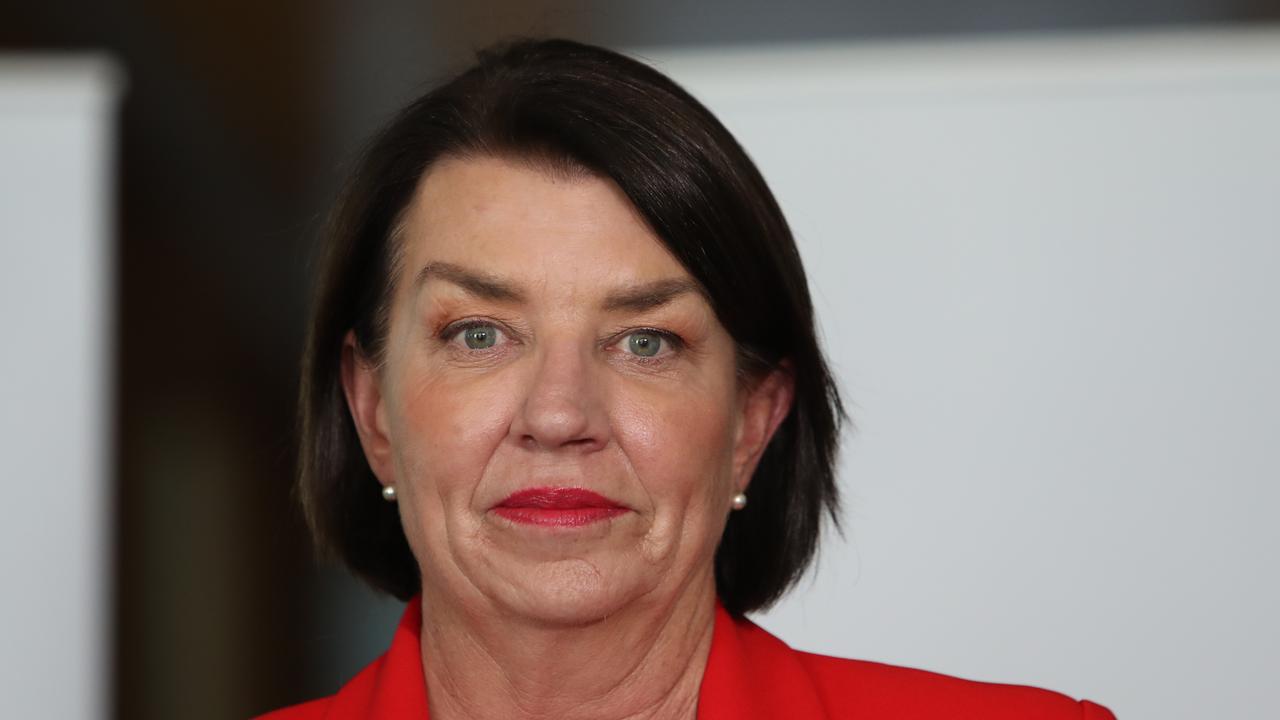Banking royal commission live: Rabobank in the spotlight as cattle farmer Wendy Brauer takes stand
Today’s hearings have ended with a Rabobank regional manager being grilled about the bank’s KPIs and valuation process.
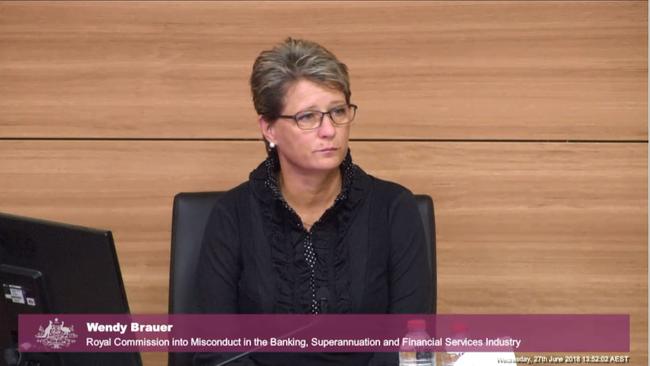
And that’s it for the third day of the rural lending hearings in this fourth round of the financial services royal commission. The week began with commissioner Kenneth Hayne pushing back against ‘misconceptions’ about hearings to date. After that senior counsel assisting Rowena Orr QC outlined the ground to be covered over the coming week of hearings and most of the time since then has been spent questioning ANZ’s head of corporate lending services, Benjamin Steinberg, about the banks acquisition of Landmark’s loan book. After that Tasmanian Farmer Michael Hirst gave emotional testimony ahead of lunch. Following the break, Queensland cattle farmer Wendy Brauer detailed her family’s dealings with Rabobank and then Rabobank regional manager Bradley James took the stand to answer questions about the bank’s incentives for lending and valuation processes.
4.18pm: Commission adjourns for the day
The royal commission has wrapped up for the and will reconvene at 9.45am (AEST) tomorrow, with Rabobank’s regional manager for southern Queensland and northern NSW, Bradley James, continuing to take questions relating to the bank’s dealings with Queensland cattle farming family the Brauers.
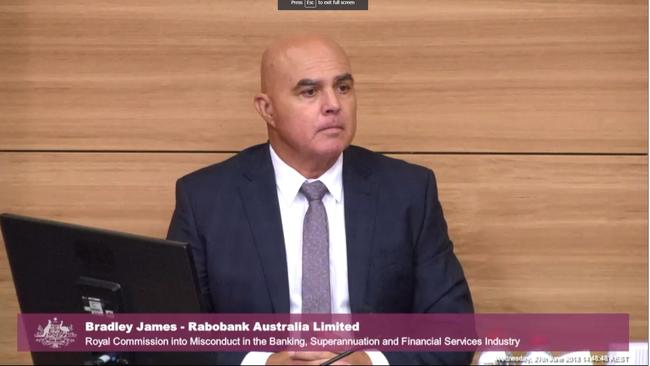
4.17pm: Credit department employee queries terms of loan
The bank manager had confidence in the ability of the Brauers, the inquiry hears. He thought the debt levels were acceptable and they had the ability to service the loan.
The credit submission was then assessed by the credit department. The person who assessed it, a Mr Gray, said that “while on the surface the LSR is okay for this request, gearing is high and serviceability is very hard to get a grip on … From now until 2012 this request doesn’t work. And most of the assessment between now and 2013 is hypothetical. A lot can change between now and then.”
Mr Gray then queried how the sale price on the US property was going to be determined and also wanted details on lease arrangements and assumptions on lease income if the vendor moved off the property. He also asked for information about the investment properties. He queried a number of assumptions made by the bank manager, including cattle numbers and living expenses.
So given Mr Gray said that from late 2009 until 2012 the request “does not work” would it be fair to say that there was a real risk that credit approval for the loan to purchase Jamberoo was not forthcoming at this time, Ms Orr puts to Mr James. Yes, Mr James responds.
4.12pm: Rabobank manager talked of getting ‘a foot in the door’
The bank manager wrote in a loan document that the lease of Kia-Ora to the Simmonds “would give Rabobank a foot in the door with the Simmonds.
“In what way would the fact that the Brauers were leasing Kia-Ora to the Simmonds give Rabobank a foot in the door with the Simmonds,” Mr Orr asks.
Mr James can’t answer the question.
“Because he’s got his KPIs and he’s always looking for loan opportunities, isn’t that right?”
“Yes he is.”
The credit submission made by the bank manager shows the Brauers’ gearing would go from 24pc to 44pc with the purchase of Jamberoo.
It also shows the bank manager knew the Brauers had sold their cattle and would need to buy new stock when they returned to Australia and details the amount they would need to do that.
4.10pm: Looping back to the Brauers case
We’re back on the Brauers. The bank manager involved valued the Brauers’ portion of Jamberoo at $2.9m.
At the same time the bank manager was valuing the portion he was discussing with the Brauers, he was doing the same thing with the portion for the Wrights.
The valuation report for the Wrights, from the end of July 2009, showed that portion was valued at $1.1m.
Combined it comes to a total of $4m for the valuation — precisely the figure he told Mrs Brauer he thought the property would go for, Ms Orr states. That’s correct, Mr James agrees.
3.55pm: Three types of valuations done by appraisers
We now go to look at the types of valuations that an appraiser can do: a desktop appraisal is one of them. These are triggered by exposure a client would have with the bank, Mr James says.
A joint appraisal was another — again exposure triggered. So values between $1m to $16m. The account manager inspects the property and the valuation is adopted by the internal appraiser, Mr James says. The figure comes from the review of the inspection and comparable data, he says.
The third valuation is a “full appraisal”: This occurs in excess of $16m. The internal appraisal manager attends the property and provides the appraisal.
So relationship managers don’t conduct valuations anymore but they remain heavily involved in the process, we hear.
3.51pm: APRA probe Rabobank valuation in 2017
APRA conducted a review into Rabobank last year and identified continuing issues with its valuations.
The third of three key findings related to the valuation policy. APRA noted that valuation issues were seen in many of Rabobank’s problem files.
APRA said Rabobank needed to improve its “lessons learned” process. APRA reviewed 6 lessons learned memos from Rabobank and it said there was further scope for improvement. APRA also noted there were several recurring issues, including valuation issues. APRA asked Rabobank to provide a review of its valuations by March of this year.
Rabobank told APRA it had established a new framework for valuations.
3.41pm: Policy updated but ‘experienced bankers’ still do valuations
The bank came back to look at the issue in 2014 when the ECB released new regulations. A groupwide policy was issued that said independent valuations were required.
Following these regulations a new unit in Rabobank’s risk division was established that no longer permitted loan originators to value property. Internal appraisers or external valuers would now value properties, Mr James said, The internal appraisers aren’t “valuers” either, Mr James concedes. Typically they are “experienced bankers,” he said.
3.34pm: Loan originators were allowed to conduct valuations
Bringing up Rabobank’s valuation policy at the time, Ms Orr points to what it says about internal valuations by account managers, where it specifies the valuation reports must not be released to clients.
The reason they weren’t released to clients is because the people conducting the valuations weren’t valuers … they were bankers.
Ms Orr puts it to Mr James that issues with Rabobank’s valuations were arising and APRA had told the bank to change its measures.
In 2011 the bank identified deficiencies with its valuation process. In the same year, APRA conducted a review on collateral and foreclosure management of a number of banks and Ernst & Young, who conducted the review, said the bank was given an orange rating on the independence of its valuations. Orange suggested there were opportunities for improvement, Orr clarifies.
A letter from APRA in December 2011 made reference to the review, saying there was risk due to the collateral management system not being independent of the credit origination function.
Rabobank replied to APRA saying it was cogniscent of the significance of accurate valuations and it had implemented a series of controls in 2011. The updated policy still permitted the loan originator to conduct valuations, so there remained a lack of independence, Ms Orr states. Yes it did, Mr James agrees.
Richard Gluyas 3.30pm: The problem with ANZ’s post-mortem
The optics of ANZ Bank’s purchase of Landmark’s $2.3 billion rural lending book kept getting worse the longer that the bank’s head of lending services Ben Steinberg remained in the royal commission hot seat.
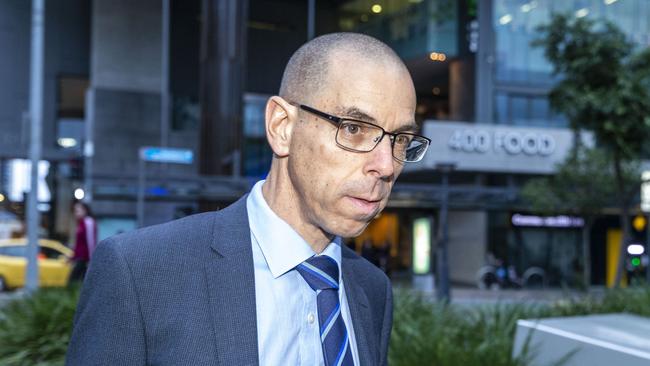
To be fair to Steinberg, who presented as a credible and thorough witness, that’s no reflection on him, even as senior counsel assisting Rowena Orr tugged at his memory today for a third consecutive day.
The problem is that any bank acquisition in December 2009 is going to look like a stinker when you conduct a post-mortem in June 2018.
ANZ certainly did itself no favours.
From the outset, it botched its communications strategy with 4500 new customers, compounding the issue with a technology glitch that made it difficult for them to open up accounts once they were migrated to the ANZ technology platform.
Read more
3.22pm: Bank manager handling loan also valued property
Ms Orr goes back to the Brauers and their emails with the bank manager.
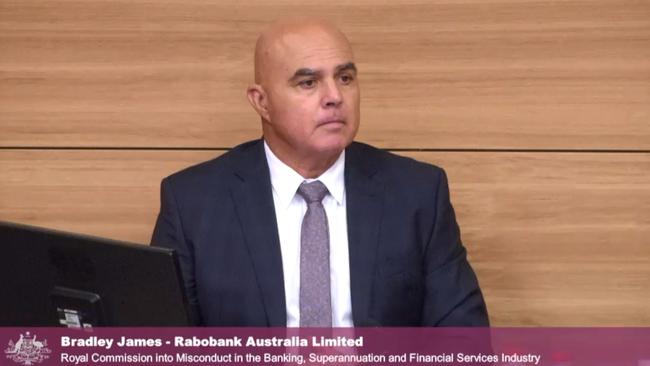
In July 2009 the bank manager inspected Jamberoo to value it. Ms Orr brings up the valuation report. It shows the valuation at $2.9m. Was it usual for the bank manager who is writing the loan to also conduct the valuation? Yes, it was at the time, Mr James says.
3.19pm: Confusion over Rabobank’s current conflict of interest policy
Ms Orr asks what the bank’s conflict of interests policies currently state? They are clearer and more precise, Mr James says. If a conflicted staff member identifies a situation they report it to their account manager, who reports it to a risk officer and then it’s reported to the compliance department.
Ms Orr asks about a point that says it may be appropriate for a staff member to permit disclosure of a conflict to a client in exceptional circumstances. Why is it only exceptional circumstances that would permit disclosure, Ms Orr asks.
Mr James isn’t sure what circumstances would allow that to happen. So he would think it would generally not be disclosed.
Ms Orr and Mr James are disagreeing on their interpretation of the policy.
3.12pm: A conflict of interest emerges
There’s a conflict of interest we’re just hearing about. The bank manager wasn’t just assisting the Brauers, he was also assisting the Wrights, who were looking to purchase the smaller portion of the land. The Wrights were assisting their adult children, who were prospective clients, to purchase the land. The vendor of the property was also one of the bank manager’s clients.
Is that an acceptable position? No. Why not. It gives rise to a conflict. Rabobank had a policy at the time to report conflicts of interest, Mr James says.
Ms Orr brings up the Rabobank document dealing with conflicts of interest. It shows examples of conflicts. One example is similar to the Brauer case.
Mr James says the conflict wasn’t disclosed “because I believe it was overlooked”.
3.07pm: Lending targets used in awarding bonuses
The bank has requirements for bankers to ensure the quality of lending is maintained, Mr James said.
But at the same time you have incentives for managers to go out and bring in as many loans as they can, Orr asks. As long as the quality of lending is maintained.
Upon meeting KPIs the bank had a bonus system. If you didn’t meet targets you didn’t get a bonus, Mr Orr puts to Mr James. He disagrees, saying a bonus would not be paid to a manager who achieved lending targets but not risk targets.
Moving on to the bank manager’s inspection of Kia-Ora. Why was he doing the valuation a week before he sent an email to the Brauers? “I can’t answer that, I’m sorry,” Mr James says.
Ms Orr refers to the emails between the Brauers and the bank manager regarding Jamberoo.
“He estimated the purchase price for the available portion of land and told Mrs Brauer there were a number of other interested parties in the email.” Is that something Rabobank would encourage its bank managers to do. Not in this case, Mr James says.
2.59pm: Rabobank regional manager grilled over Brauer loan
Rabobank regional manager for southern Queensland and northern NSW Bradley James takes the stand. His area extends from Rockhamption to Armadale.
Rabobank aims to be the leading rural lender in Australia, he says. The bank has 61 rural branches in Australia. 9 are in his area.
In his region the loans among rural clients range from $500k to $140m.
Ms Orr asks if he has reviewed the bank’s records in the Brauer case. He says he has.
The original bank manager who the Brauers dealt with from 2005 had been with the bank for 2-3 years when the Brauers became his clients. Ms Orr runs through the timeline of the Brauers’ loans and their move to the US.
Is that type of unsolicited correspondence typical, Ms Orr asks.
It varies depending on the manager and the level of activity of the manager, he says.
Is that sort of contact something that Rabobank would encourage? No
In this set of circumstance it gave rise to conflict between the three parties involved. Ms Orr says she’ll come back to that.
An email like this is sent because it’s the start of a process that would enable the bank to write a new loan, Ms Orr says. And the bank managers KPIs required that he meet a certain level of lending, Ms Orr says. Mr James agrees.
The 2009 appraisal form for the bank manager is brought up. His KPIs for the fin mgmt objective were achieve gross lending of rural loans of $15m and net lending of $12m per year. So he was incentivised to find opportunities to set up loans, Ms Orr states. Mr James agrees.
His mid-year achievement records the first 6 months of 2009 had been slower than previous years and he was working hard “to convert all opportunities”.
Mr James says the bank still has these objectives in place for managers to increase business and he sees no difficulties with that.
2.45pm: ‘It wrecked us’
On the financial impact of purchasing Jamberoo, Mrs Brauer says they would be at least a million dollars in the red.

“It wrecked us. We didn’t talk to each other much. There was nothing to talk about. We had kids in school we couldn’t afford to visit. They were two hours away … they were understanding but we tried to shield them from the nasty stuff. I was clinically depressed. We trusted these people. They were there to help us.”
“When I said to Greg Brady ‘you are in this with us’. He said ‘I’m not in business with you’.”
“I recommended those jerks to other people and said how understanding they were. I trusted them. They put us backwards. They came looking for us to buy this block and 12 months later they came looking for us to pay them back more than we borrowed. I don’t understand.”
Mrs Brauer is excused.
2.41pm: ‘We left a lot of people swinging for quite a long time’
As June 2013 approached they asked for an extension on the $3m. They got an extension for a year. After that year they still couldn’t repay the $3m. Their accounts were frozen.
“We left a lot of people swinging for quite a long time. That didn’t sit well with us.”
We weren’t the only people this was happening to by the same bank.”
Rabobank started applying default interest of 10pc to the facility.
The bank invited them to attend a farm debt mediation. “It was a nice way for them to say come meet with us so we can take what you have.”
They had a legal aid solicitor who asked for documents. Rabobank didn’t provide the documents. They attended the mediation and had to pay $1500 for the mediator. They had to travel to Toowoomba and pay for their accommodation and meals.
They arrived at 8am, put into a room and sat at a table. The bank got there at 9am. They weren’t allowed to leave. The brought in breakfast, lunch, tea. When Mrs Brauer asked to go for a walk they said no, they wanted to get it all done.
By the end of the day they had agreed to sell the Jamberoo property for not less than $2m by the end of 2015. They also agreed to be refinanced to $4m by June the following year. So they would have to repay total of $4m by the middle of the next year.
The bank said they would refund the defaulted interest. They sold Jamberoo for $2.4m. They refinanced with a private lender “to bridge the loan” on a six-month contract at a 9pc rate. They then refinanced with NAB.
2.34pm: Flooding puts an end to lease
In the lead up to the settlement the manager said they would have to provide 60k of their own funds to cover settlement because the loan wouldn’t cover it. “I wasn’t impressed by that,” Mrs Brauer said.
Once the property settled they leased it back to the vendor on a two-year lease for $170,000.
The Brauers expected to move back to Australia in June 2011. They expected they would renegotiate Kia-Ora for a further 2 years.
In 2010 there was severe flooding that affected the area. It wrecked the leasee’s crops, Mrs Brauer said. He decided it wasn’t viable to keep going and would end the lease in March.
The Brauers informed their bank manager in January 2011. They said they were feeling desperate and asked him for his suggestions.
They arrived back in Australia in March 2011. She describes their financial situation as “pretty dire”. Their bank manager came to see them with another man. She describes the visit as “tense”. Their manager told them he would no longer be in the branch and the other man, Greg, would be taking over.
They were told they would have to sell a property and would have to pay the bank $3m by the end of June 2013. On agreeing that condition they could have $300,000 to restock.
Mrs Brauer said she was “frightened, panicked” and mad. “Our business was farming, their business was money. I trusted them.”
They signed the document but didn’t feel they had a choice. “We have $5 in our working account. We felt desperate. Our kids had to eat.”
The flood “put the skids under” a what they had viewed as fixed income for a while. In 2011 there was a ban on live export cattle to Indonesia, which sent cattle prices lower.
They asked Greg Brady about hardship arrangements. He said he didn't know anything about them and he didn’t know why they would enter into something like that.
Mr Brady introduced them to another banker, Mr Ole. She describes him as a bully and was surprised he didn’t turn up to their house with a baseball hat.
2.24pm: Baruers negotiate with Rabobank and purchase property
The Brauers responded asking questions about what the interest rates would be. Mrs Brauer also asked the manager not to forget they had living expenses.
They also didn’t want to use the money in the farm management accounts, Mrs Brauer told Orr.
After visiting the property Mr Brauer was “very keen” to buy. He was also nervous because “we were basically starting from scratch”. They were worried about the cashflow situation and raised the issue with the bank manager. He suggested getting a larger loan than that needed to use the funds to enable them to restock with cattle when they returned from the US.
The Brauers decided their manager was happy to back them and help them out, so they decided to move ahead. In August 2009, they signed a contract of sale for the portion of the block discussed. The price was around $2.8m. After signing they had more email exchanges with the bank manager. He said his Sydney colleagues had come back to him regarding their income and living expenses and their investment properties.
After providing answers, the bank manager said Sydney wanted to reassess the additional loan. He said until the lease expires there would be a limit of $3.7m. He indicated there would be more funds available when they returned. So the Brauers understood that upon their return to Australia, $300,000 would be available to restock both farms with cattle.
2. 15pm: An intriguing offer piques their interest
In June, after they moved to the US, they received an email from their Rabobank manager about a farming property that had come onto the market. The property wasn’t too far from their own farm. He estimated a price of around $4m and asked if they were interested.
Were you looking to buy another farming property, Orr asks. “No, we weren’t. It was bad timing, we had just moved to the US. But it was an interesting prospect.” Her husband was interested because he knew the area. So they sought further information from the bank manager.
He replied at the end of June saying that another farming family the Brauers knew was seeking a smaller portion of the property. The vendor wasn’t interested in selling only a portion. The manager said the remaining portion would cost the Brauers about $3m.
In late July they received an email from the manager detailing loan serviceability. First he dealt with existing limits — $1.2m in total. He talked about an increase of $3m. He then calculated the interest payable as $315k a year. He then does an analysis of their income. Mrs Brauer was at the time working part time in a shop and her husband would do odd jobs. They were funding their lifestyle by transferring their lease income — $200k a year. A further $170,000 was an estimation of what they expected to get by leasing back the new farming property to the vendor.
On expenses, the bank manager said there was only rates, insurance and water. He said his figures didn’t take into consideration that the $200,000 loan was serviced by rental property.
The manager then looked at their farm management deposits, $147,00 in total. And out of the $1m loan they had $267,000 undrawn. And on the $200,000 loan they had $67,000 undrawn.
These were his calculations sent to the Brauers.
2.03pm: Cattle farmer Wendy Brauer takes the stand
We’re back after lunch and case study Wendy Brauer takes the stand.
Ms Brauer moved from the US to Australia in 1993. She and her husband own a farm, Kia-Ora, 280km southwest of Rockhampton in Queensland. They breed and background about 900-1,000 cattle.

The farm has been in her husband’s family since 1974. They took over the farm and its liabilities in 2002. The operations were originally financed by CBA. In 2005 they refinanced with Rabobank. They did this because they thought Rabobank understood farmers better. In April 2005 they entered into a facility for $700,000 over a 15-year term. They also refinanced two CBA facilities and borrowed additional working capital.
In August 2005 Rabobank offered a second facility of $200,000. In July 2006 they increased the amount of the first facility to $800,000. The expiry date remained the same.
In 2007 they decided to temporarily relocate to the US. The plan was to relocate for two years. In 2008 they applied for another extension to $1m. They used the funds to buy a house in the US. The expiry date remained the same.
Early in 2008 they leased the farm out. They obtained Rabobank’s consent. The lease was for three years. They sold their cattle and moved to the US in March 2009.
12.50pm: Commission breaks for lunch, back at 1.50pm
The hearing is adjourned for an early lunch and will return at 1.50pm to address a new case study.
12.49pm: ‘Hirst tells bank straight’
Tassie farmer Michael Hirst tells ANZ bank straight at Banking misconduct RC how they ruined his life and family. Heartrending. Tears on all sides. ANZ finally extend the Hirsts an apology.@australian @aus_business #bankingInquiry @TfgaComms @JanDavisTas
— Sue Neales (@BushReporter) June 27, 2018
12.48pm: ‘They have never shown any compassion or empathy’
Until that time there was no offer of a review from ANZ? There was not
ANZ came down, never admitted any wrongdoing. We said come back with something. We got a phone call from customer advocacy. She said we wasn't to do an evaluation with a judge. In April 2016 we got the terms of reference. ANZ offered $1,000 to get legal advice. She said you can’t sign that, it’s ridiculous. There were negotiations until January, 2017.
We got a resolution on February 28, 2017.
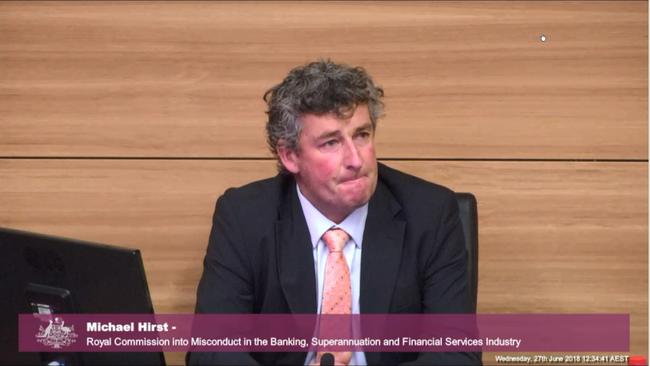
Mr Hirst gets emotional. “They have never shown any compassion or empathy. They never apologised. Where I’m from when you do something wrong you apologise.”
12.46pm: ‘We’d been belted to bits for five years’
“We’d been belted to bits for 5 years. We were on a high when Mr Phillott went on [60 Minutes]. We were quite buoyant after that program. But [ANZ] still said they did nothing wrong. We were on a bit of an emotional rollercoaster.
Mr Hirst’s anger and emotion are on view for all to see as he goes into detail.
“Eight years we’ve been dealing with this. That last 18 months was tough. We were on a high and then it got taken away through protracted negotiations just to sort out what we’re gonna talk about. How hard is it? Tell me how hard is it to talk about what we need to talk about? It was all in black and white. What was the issue? I just do not understand,” he tells Molesworth.
Are you satisfied that the bank played a role in you losing everything, Molesworth asks. “There’s no doubt,” he responds.
12.42pm: ‘I never heard of FOS until I came up here’
There was no way we could challenge what the bank did. I was working quite hard, I managed to get a job driving a truck. It was quite hard. We couldn't get any resources. Mr Steinberg was correct, we were very compliant.
Were you provided with any information from the bank regarding external advice?
There may have been a referral to seek legal advice but we had no money. I never heard of FOS until I came up here.
As we went through the process of them picking our carcass to bits a few stories started to emerge from the mainland about the Landmark takeover. We say Philott on 60 minutes and then we started to realise maybe everything wasn’t right.
I refused to sign a stat dec. I said I will sign it if you say you did nothing wrong.
We wrote an email the following morning outlining most of our grievances. I had a phone call that week. Just like that
12.38pm: Tasmanian Farmer Michael Hirst takes the stand
Molesworth asks Hirst to give some detail on his farm business. The relationship with Landmark commenced in 2005, Hirst says. As the Hirsts “began to do well in the property market” the Landmark RM was “very supportive” in regards to increasing loans.
In 2011 ANZ told the Hirsts their business model was good and to keep going as they were. The last offer to increase its loans was on August 2 2011. “An ANZ RM came out on August 15 and he said put the chequebook away. I believe the accounts were frozen on the 23 August,” Hirst said.
Did the terms of financing agreement between Landmark and ANZ change?
“Yes and we felt very badly done by. On 24th October the RM and regional manager told us we were being sent to asset lending because ANZ doesn't do business like you do. ANZ doesn’t lend on the basis of capital sales, we lend on the solid cashflow basis. That blew us away … we were smacked to bits.”
Once you couldn't access funds any more were you able to seek advice or external services? We didn't have any money and weren’t asking ANZ for any money at that point because we realised the situation we were in. The valuations had dropped significantly at that point. We were using an accountant who put us in touch with a crowd in melbourne … everything ANZ wanted them to do, they did.
12.33pm: ‘Why is it so difficult for the bank to admit they got it wrong?’
On the admission of wrongdoing, Molesworth asks Steinberg why it’s so difficult for the bank to admit they got it wrong.
Steinberg says in deciding whether in the Hirsts’ case ANZ found it hard to come to a conclusion one way or another on whether they got it wrong.
Steinberg goes on to say the bank is prepared to admit wrongdoing when it occurs.
Molesworth asks why the bank has never apologised to the Hirsts.
Steinberg isn’t aware if an apology was made. “I take that opportunity now to offer that apology,” Steinberg says.
Steinberg is excused.
12.28pm: Questions go to inflated Hirst valuation
A diary note from 12 days later then shows the valuation given for the securities was suddenly 40 per cent lower. The note was made by the new ANZ relationship manager.
Another document, 21 days after the offer was made to increase the Hirsts’ credit facility, shows their accounts are now frozen, Molesworth says. Steinberg disagrees with the assessment of what the letter says.
Do you think the original valuation of $7.75m was inflated, Molesworth asks. “Those valuations were done at a point in time, and a couple of years later the values came in materially less. That appears explainable by the changes in the industry and market at that time,” Steinberg says.
Would a regional manager have any incentive to inflate a valuation? Would his remuneration be linked to his ability to provide debt funding? Steinberg hesitates and says his instinctive reaction to that is no.
12.21pm: Steinberg says ANZ met community expectations and standards in Hirst case
Turning to valuations, does Steinberg believe ANZ acted below community standards and expectations in respect in how it used and undertook valuations on the Hirst properties.
Steinberg: “The valuations were undertaken by the Landmark RMs, as per their procedures.
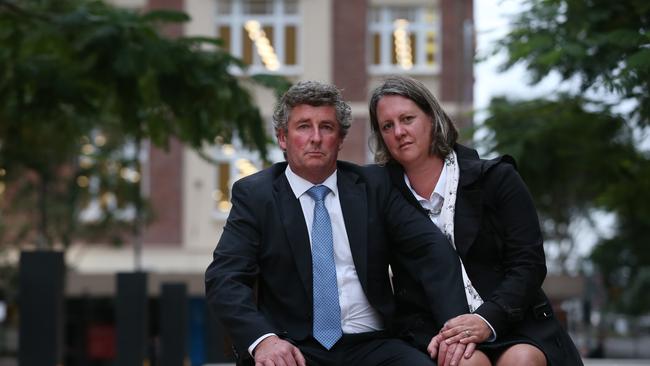
After the takeover, ANZ adopted those valuations. I believe we did meet community standards because ANZ’s policy is we undertake valuations every 36 months. Under our policy we were able to rely on those valuations until 2011 and 2012. So did we act in accordance with our procedures? Yes, we did, so therefore we met community expectations and standards.”
Molesworth takes Steinberg to a document that shows ANZ signed off on a valuation of the properties at $7.75m. Based on that valuation there seems to be a recommendation to increase leverage, Molesworth says.
Steinberg says the document doesn’t show him that, but that the document does show the bank was recommending an increase in lending.
12.17pm: Hard to say if things would turn out better under current ANZ rules
Do you think the Hirsts would be treated differently and get a better result under the new ANZ rules?
Steinberg responds by saying he would agree with the notion that farm debt mediation generally results in better outcomes. But from the Hirsts file he sees there was regular engagement between the Hirsts and the bank, a cooperative relationship, so whether debt farm mediation would have achieved a better outcome he can’t say.
Molesworth asks Steinberg about his statement, in which he said farm debt mediation was introduced in August 2015 — a year before the Hirsts were offered any sort of dispute resolution. Weren’t they subject to these new rules?
Steinberg says the last two properties were sold by the Hirsts at the start of 2015. So the Hirsts enforcement process had already occurred.
12.09pm: Compensation claim kick started review process
Is it accurate that the bank only offered a review process once the Hirsts wrote to the bank some years after this all started, seeking compensation. Yes, that is when the valuation process was offered.
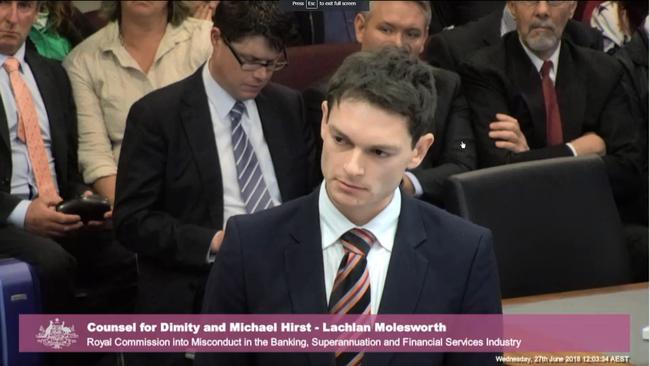
Do you think there’s an imbalance of power in understanding what options are available when these disputes arise. That is possible. In my recollection the Hirsts employed an insolvency practice. I’m comfortable that if there were any inequality that should have been rectified by the representation of the insolvency firm.
12.08pm: Lawyer for the Hirsts cross examines Steinberg
Counsel for the Hirsts, Lachlan Molesworth, seeks leave to cross examine Mr Steinberg on three issues.
He begins by taking Steinberg to his witness statement. You note in October 2015 ANZ offered to participate in independent evaluation process. Before this time had ANZ offered the Hirsts any other review processes which would be available, he asks.
The Hirsts were dealing with the customer advocate department in the bank. That’s where the matter was being looked after.
In the four years between August 2011 and then, would have advice been provided on external assistance — mediation, FOS.
My understanding was the Hirsts were obtaining legal and financial external advice. I can’t recall any time we would have offered that.
In our current practice we certainly encourage customers to engage legal and financial advice. Just cant recall specifically to answer the question.
Given they had their accounts frozen it’s reasonable to assume they would have had no financial resources to seek advice.
I’m not aware of their account being frozen. I don’t see any evidence of that. In terms of the financial side, their business was two sided — one was the farming side, cropping and livestock. The second was property development. Recalling their cash flow forecast that demonstrated with property sales they would be able to reduce their debt significantly. When I strip out the capital side of the equation to answer your question there was a surplus of trading funds so that communicates to me that there was some funds available.
11.48am: Commission breaks, back at 11.55am
Senior counsel assisting Rowena Orr QC wraps up her questioning of Mr Steinberg and with that we’re off on a short break. The commission will return at 11.55am.
11.45am: Steinberg rejects assertion that systemic cultural issues existed
A portfolio update from 2016 sets out the key outcomes from the review of the Landmark files.
The first point says there were no systemic issues. Do you agree with that, Orr asks. Yes, I do.
Well why then did fixing those problems require significant changes to the handling of Landmark customers and ANZ changing its processes? It wasn’t systemic in that it was related to a small number of customers, Steinberg says.
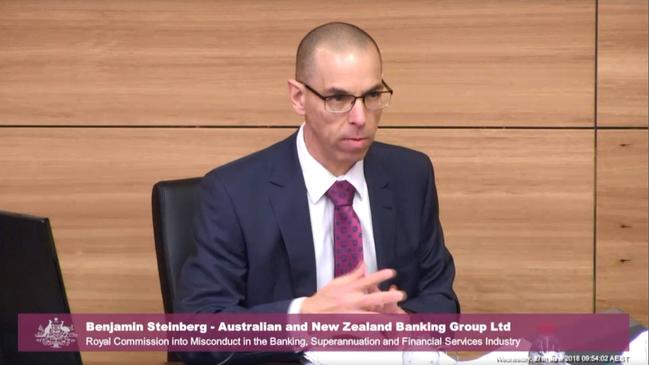
Orr puts it to Steinberg that there were systemic issues with the culture at ANZ before it embarked on these changes. “No, I don’t agree with that,” Steinberg says.
Orr: “You say all of these changes as not being driven by those problems?”
“[The changes] started in 2014 and some of these issues that caused the media publicity contributed to it. Please take into account that in my part of lending services we have 700-800 accounts at any one point in time and every year I have 400-500 new accounts coming in and out so there are a large number coming through.
“When you talk about the customers we’ve spoken about I don’t consider it systemic because we have had thousands coming in and out since I’ve been in the role”.
How many of the cases resulted in a settlement for a Landmark customer? Steinberg isn’t sure. He guesses 40 or 50 cases. How much was paid? $40 million. “We tracked the cost of this exercise and it includes areas where we had debt forgiveness as well as refunded interest or paid compensation.
Do you think ANZ’s policies regarding agribusiness now reflect the community’s expectations, Orr asks. Yes I do, Steinberg agrees.
11.39am: Steinberg agrees ANZ failed to take emotional impact into account
ANZ now takes into account the emotional impact on customers of its actions, and that was lacking in ANZ’s handling of the Cheesemans and Handleys, Orr says. Yes, Mr Steinberg agrees.
Hayne asks if it’s right for the community to expect fairness to customer and bank. Yes, Steinberg agrees. Steinberg says he is most concerned about depositors and that the bank is able to meet its commitments by managing its loan portfolio.
11.30am: Risk to reputation a significant motivator of changes
Orr takes Steinberg to a document that outlines ANZ’s farming strategy for 2015 in which an executive summary details “an increased focused on agri customers including media and political attention”. Another heading says additional measures are required to assist distressed farmers which may reduce litigation risk.
A third heading references “lessons learned from the New Zealand experience”. Ms Orr asks what that refers to. Mr Steinberg says he doesn’t know.
The document details a taskforce put in place to deal with 16 high-risk customers. One of those cases was the Cheesemans. How many cases of former Landmark customers did the taskforce review? Between 185 and 200, he says.
Does the taskforce still exist? Yes. It’s role now is to assist relationship managers across lending services with more complex situations so they are dealt with in a consistent way.
Every Landmark file was looked at and approximately 200 were reviewed by the taskforce, he clarifies.
A significant motivator to the changes was to manage the risk to its reputation, Mr Orr puts to Mr Steinberg. He says he would agree, with the qualification that a subset of its reputation is how ANZ treats its customers.
11.21am: ‘Negative publicity one of the drivers’
Orr asks Steinberg about the establishment of a specialist team to deal with agribusiness.
ANZ also started to use farm debt mediation more frequently in 2014 and increased the frequency of face-to-face meetings.
Then stories about Mr Phillott began to circulate and ANZ announced its moratorium on farm foreclosures. Was that as a result of Mr Phillott’s story circulating? Some of the publicity may have been a driver to some of these decisions, he says.
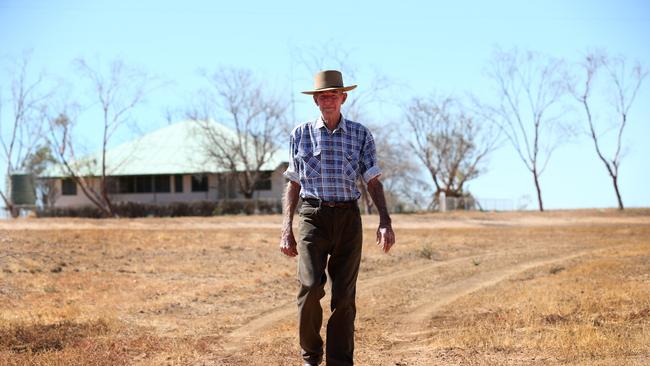
ANZ started making further changes to its lending services team, didn’t it, Orr asks?
ANZ started addressing the culture of the team, she puts to Mr Steinberg. He says that is all part of the restructure that started in March 2014 when a new general manager came along.
Orr puts it to Steinberg that the political and media attention that ANZ got as a result of Mr Phillott’s case in late 2015 led to significant changes. He agrees that ANZ doesn’t like negative publicity.
11.13am: Orr runs through list of ANZ breaches of code and community standards
Orr moves on to a document that details where ANZ’s conduct fell below community for seven Landmark customers, including the Cheesemans and Handleys.
In another three cases, ANZ breached the code of banking practice. Orr runs quickly through these, detailing what codes of the banking practice ANZ breached in each one, including a case where ANZ took guarantees from a customer’s mother and siblings without taking all steps to see if they were suitable guarantors.
11.06am: Steinberg agrees ANZ’s conduct fell below community standards
Orr has moved on to another case of cattle farmers in Queensland. They are subject to a non-publication direction. Steinberg admits ANZ’s conduct fell below community standards in this case.
The overdraft facility made available to the farmers was less than what had earlier been agreed to. It wasn’t rectified for a number of months. Mr Steinberg doesn't know why there was an error but it may have been due to the transfer of files from Landmark to ANZ.
ANZ also denied a request for disaster relief that these farmers put forward.
Orr asks Steinberg what ANZ’s current approach to disaster relief is. Steinberg says it’s conducted by the front line staff and customers are contacted as well as a media release put out to the wider community.
11.03am: Orr questioning turns to ANZ’s handling of Handley loan
Steinberg says in certain cases ANZ’s conduct fell below community expectations and standards in that case, where ANZ declined to extend mediation after the Handleys requested an extension following Mrs Handley’s cancer diagnosis.
ANZ admitted some errors, including in the transferring of files from Landmark to ANZ. The errors in part led to the Handleys not being able to access funds and several of their cheques were dishonoured. “And do you accept that ANZ’s conduct fell below community standards?” Mr Steinberg runs through what ANZ did to rectify the error.
ANZ failed to extend overdraft limits to the Handleys that they had said they would extend? Yes, Mr Steinberg says. And that resulted in the overcharging of interest. And that was a case of ANZ’s conduct falling below community standards? It may have, he says.
There was also an occasion where a staff member signed documents as a witness despite not witnessing the Handleys signing the documents. Yes, Steinberg agrees.
Orr asks if ANZ has investigated how widespread the false witnessing issue is? I don’t know the answer to that question.
10.54am: Final points on the Harley case study
Just two more points to go on the Harleys, Orr says.
We’re on what a market value on an ‘as is’ basis. Orr asks Steinberg to define it. Steinberg says that means the property is ‘as is’ with no improvements. And what about a market value on “highest and best use basis”, Orr asks.
I’m not comfortable describing those terms. Steinberg accepts this was a valuation ‘as is’.
The final point Orr makes is regarding whether the Harleys were provided with the valuations. Yesterday Steinberg said they were not provided. Ms Orr, referring to documents provided by ANZ’s lawyers, asks if Mr Steinberg wants to change his statement. He says yes he does. The Harleys were provided with the valuations.
10.50am: Steinberg maintains ANZ conduct did not fall below community standards
In July 2017 the decision was made not to pursue the Harleys’ debt and in February 2018 ANZ issued a letter saying it wouldn’t pursue the Harleys for the outstanding debt.
Why did it take ANZ more than six months to tell the Harleys that news, Orr asks?
Steinberg pauses, looks through some paperwork, before saying he doesn’t know why.
This was a period when the Harleys were still asking ANZ and wondering if ANZ would continue to pursue the debt, Orr says.
The Harleys made a call at some point and Steinberg isn’t sure if the response was a diary note in July or the letter. “I’m just not able to help with that at this time, I’m sorry,” he says.
In his statement Steinberg referred to the communications between ANZ and Mrs Harley that he described as “regrettable”. “I read into the notes a tone that came across to me as tense. It made me uncomfortable reading those notes.
But in your statement you’ve resisted the characterisation of ANZ’s conduct not falling below community standards and expectations. Do you maintain that? Yes I do.
10.45am: ‘I think the community would expect us to recover the money that’s owed’
In another letter, the Harleys’ lawyers did a comparison between the 2013 valuations and the sale price and said the lots were sold at a discount of more than $500,000. There should have been a surplus remaining after the sales, the Harley letter said.
The Harleys’ lawyers then proposed the two parties enter into an agreement and ANZ discharge the remaining securities. ANZ responded by saying it disputed the allegations and rejected the proposal.
Orr asks if the community would have expected ANZ to accept the offer? Steinberg pauses again, a lengthy pause. He says it comes back to how ANZ assessed community standards and expectations. “We feel we have to do what we say we will do. In this case that’s happened. The story is a sad one but we were pursuing our contractual rights to get paid. It’s a sad list of events to listen to, I think the community would expect us to recover the money that’s owed.”
Is that right? Orr asks. “The community expects us to do what we say we’ll do and we were consistent with our dealings with the Harleys over a three-year period.”
Ms Orr puts it to Steinberg that this was a breach of the code of conduct. “I don’t agree with that,” Steinberg answers.
Hayne interjects asking if Steinberg is surprised that an external administrator should achieve on realisation values of the order of one third less than values struck by an independent valuer? Steinberg says the discounts are referring to the earlier valuation — a valuation that was about a year old.
Was the 2014 valuation fair market or a forced sale valuation? Steinberg says his instinct is that it was a for market valuation but he can’t recall specifically. Orr points him to his statement that says it was at market value.
Sue Neales 10.35am: Pay up or get out tomorrow, ANZ told farmers
For more background on the Harley case at the centre of this morning’s questioning, read this article from Sue Neales that appeared in today’s paper:

The ANZ bank told farmers Janine and Steve Harley they would have just one day to vacate the sheep property south of Perth their family had owned for more than 100 years, unless they could meet their loan deadline.
The bank sent a default notice to the struggling farmers a few weeks after Mr Harley suffered a heart attack, before giving the couple six months to repay their entire debt.
The financial services royal commission was presented with several cases where ANZ had evicted farm families, leaving them with nowhere to live, and achieving little or no commercial gain for the bank.
10.33am: Orr outlines sales of Harley properties
Orr moves on to specify who valued each of the parcels of property and the dates they were valued.
The majority of the properties were valued by LMW Hegney in 2013. Two were valued by LMW Hegney in 2012.
The four parcels were then valued by Optium in May 2014, after the agents were appointed. They’re the four parcels of land that were sold by ANZ as the mortgagee in possession. In each case the value of the property reduced significantly between the 2013 and 2014 valuation.
One went from a $425,000 valuation in 2013 to $280,000 in 2014. The property was sold for $250,000
Another parcel was valued at $350,000 in 2013, $270,000 in 2014. Another was valued at $575,000 in 2013, $340,000 in 2014 Another went from a valuation of $250,000 to $190,000.
10.27am: Focus switches back to Harley case study
Back to the Harleys. Ms Orr runs through the four parcels of property sold and how the proceeds were used to pay down the debt.
Ms Orr directs Steinberg to a letter that ANZ sent to the Harleys lawyers after the sales. The Harleys remained indebted to ANZ and if the Harleys didn’t repay the debt within 8 days ANZ may commence bankruptcy proceedings.
Orr and Steinberg are disagreeing on whether or not the wording constitutes a “threat” of action to be taken if the debt isn’t repaid.
How did ANZ expect them to discharge the remaining debt if they had already sold all their properties? We asked them to contact the underwriter to discuss options.
How much did ANZ charge the Harleys for enforcement costs? You charged them almost $60k. That included the cost of valuations. Did the Harleys have a say in who would conduct those valuations? Not to my knowledge. Should they have? Certainly under today’s policy they would.
10.17am: Bank balances reducing losses and achieving certainty
What is the objective of dealing with a file in lending services, Orr asks. “To help our customers get back on track. We manage the bank’s high risk customers. We develop a strategy for each particular file on a case-by-case basis.
Is one of the objectives to maximise the value for sale of assets?

We are clearly trying to achieve the best result for the bank and customer.
What’s more important: losing as little money as you can or achieving certainty for the bank? He pauses. I think both variables are important and sometimes it’s a matter of balancing the two. I don’t think there’s one answer that could apply across the board.
Are there times when the two objectives are inconsistent, Orr asks? Another pause from Steinberg. “There’s a bit of complexity to that question … there are cases where we need to assess the net realisable value of the actions were undertaking in terms of the returns it provides the bank. It’s not comparing one number to another. A number today could have a different value to another in 12 months time.
Do you accept that appointing a receiver might get you certainty but might not get you maximum realisable value? I trust the legal framework around the work we do, he says.
Hayne steps in and suggests a receiver will move to sell quickly. Generally Steinberg says he would agree with that.
“I would expect a receiver to do an analysis of what will achieve the best outcome. If the receiver believes the best outcome would be to hold back a sale for some reason … I would expect them to come back to us with a strategy around the best method for realisation of that.”
“Appointment of a receiver has timing consequences, doesn’t it,” Hayne says.
Steinberg responds: I accept that there was only a two-month period between when the receiver sold it and when the customer wanted to sell it. He is referring to yesterday’s case study.
10.08am: A change in ANZ’s ‘four pillars’ of lending services
Orr brings up a document that outlines the strategic plan for ANZ’s lending services for the year ended 2015. She notes the “four pillars that define strategy: being a trusted adviser, revenue cost capital, people and well managed. Do they remain the pillars that define the strategy?” No, he says. Now, number one is customer, number 2 is people, 3 is well managed and I can’t quite remember the fourth, he says. Perhaps it will come to you, Orr says.
In 2015 these were the four pillars, and these were relevant to the Harley case, Orr says.
In terms of the second pillar, revenue cost capital, it says target churn of 24-30 months for agri files and 18-24 months for non agri files. What does that mean? Where we had implemented a remedial strategy for a customer the philosophy was after 12 months if that strategy wasn’t working we would rest the strategy and set a new one with the aim of making sure we had a churn, Steinberg responds.
Mr Steinberg says there was no requirement to churn files in a 24-30 month period. It was a guide to let staff know how long a restructure ought to take.
Orr takes Steinberg to a document he authored that states for FY2015 priorities it says “Look to improve churn in the portfolio that in turn reduces risk weighted assets … aim for 24-30 months for agri files and 18-24 months for non agri files”. This was a document he prepared for the CRO and was not presented to staff. “Having said that, I agree with what that document says. We were looking to improve churn.”
The Harleys file was transferred into lending services in July 2011, Orr notes. And the agents for possession were appointed 30 months after the file came into lending services. “So in line with these targets,” she says. “Well that’s coincidental,” Steinberg says.
9.50am: Orr kicks off questioning with focus on Harley case
And we’re off. Senior counsel assisting Rowena Orr gets straight into it with ANZ Bank’s head of commercial lending, Ben Steinberg, asking him further questions about the Harley case.
She asks him what the qualities of an effective member of the lending services team are. Emotional intelligence, empathy, commercial and technical skills, he says.
Are those qualities reflected in the KPIs of the division, Orr asks? He pauses for a moment before running through the performance metrics: “how well we look after the prudential and customer engagement part of the work we do. We have some financial metrics around the files we manage and how efficiently we manage those files. We have people measuring skills, how we lead our people and how our people conduct themselves. So my response would be in the way we assess our people … things like empathy are taken into account as well as other metrics such as financial.”
We have group discussions at a senior level where the behaviour of our staff and how they conduct themselves is taken into account, he adds.
What is efficiency in lending services, Orr asks, in relation to the KPIs. It’s not defined, he sales. “We don’t have any sales targets or targets for foreclosures. So we don’t have any measurable financial targets in lending services.”
At any time since 2013 has one of the measures of performance been the number of files closed or transferred out of lending services? No, he says. “We certainly keep track of that metric at a business level … I do keep metrics in terms of the number of files that come in and go out month by month and also the event that causes them to go out month by month … I report that to my stakeholders on a monthly basis.
Why is that reported? So they know what the activity levels are in lending services, Steinberg responds.
9.21am: Steinberg still in the stand
We’re back for day three of the fourth round of the financial services royal commission, where senior counsel assisting Rowena Orr QC will continue her grilling of ANZ Bank’s head of commercial lending, Ben Steinberg.
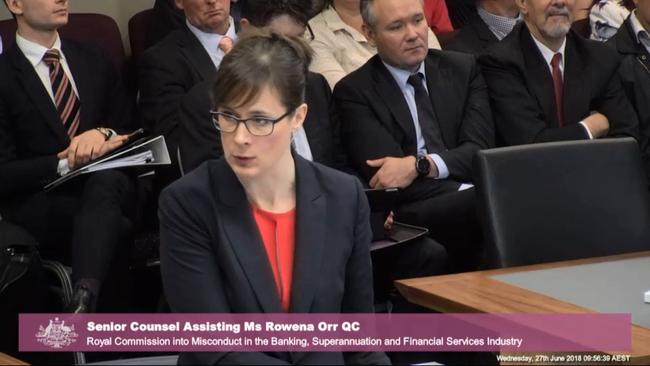
The commission yesterday heard of several cases where ANZ had evicted farm families, leaving them with nowhere to live, and achieving little or no commercial gain for the bank.
Mr Steinberg admitted that the bank had not acted fairly, consistently or ethically in one of the cases, that of Tasmanian farmers Dimity and Michael Hirst, who lost everything when ANZ encouraged them to expand and increased their loans.
We also heard commissioner Kenneth Hayne postpone hearings on natural disaster insurance case studies, which were due to start this week, to the sixth round of hearings, set for September.
The sixth block of hearings will investigate general insurance, life insurance and now natural disaster insurance.
“We are not putting them off into the never-never,” Mr Hayne said. “It’s my hope that, in reordering our work in that way, we can ensure that neither the farming work that we are now looking at or the natural disaster work needs to be in any way compressed by timetabling difficulties,” he said.
Mr Steinberg is the first witness up this morning, followed by case study Wendy Brauer, and Rabobank’s Bradley James.
Today’s hearing kicks off at 9.45am AEST.



